Other posts about Southwold on this website have mentioned The Harbour Inn at Blackshore, on the banks of the River Blyth, near Southwold as a place for singing across the twentieth century. This post draws all the information together, such as it is in early June 2021 -always pleased to hear more from any readers!
The pub itself
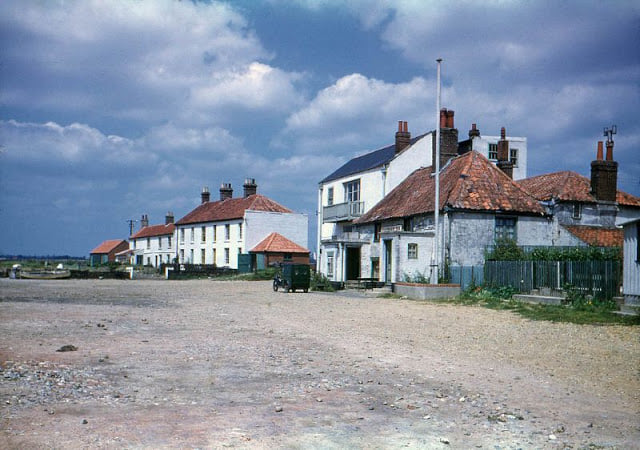
The pub dates from at least the early 1700s, when it was referred to in documents simply as the Blackshore Alehouse. By the end of that century it gained the name The Fishing Buss. This referred to a type of fishing boat which originated in the Dutch and Flemish herring fleet and was adopted by East Anglian boatbuilders too. During the course of the nineteenth century it was replaced by the dandy-rigged lugger, which was felt to offer more diverse opportunities for fishermen. The pub changed to The Harbour Inn when it was acquired by Adnams in 1898. In this photo, the pub, looking a bit run-down in the 1950s, is the building nearest the camera, on the right. In front of it is the foreshore of the River Blyth.
 Previously, the ownership and management of the pub had been tied in with that of the Blackshore quay and wharf, used by trading vessels and fishermen, although many of these preferred to launch off the beach. The narrow entrance to the harbour, at the mouth of the river Blyth, was (and still is) notorious. This black-and-white image shows the pub on the left, looking towards the river mouth.
Previously, the ownership and management of the pub had been tied in with that of the Blackshore quay and wharf, used by trading vessels and fishermen, although many of these preferred to launch off the beach. The narrow entrance to the harbour, at the mouth of the river Blyth, was (and still is) notorious. This black-and-white image shows the pub on the left, looking towards the river mouth.
Early 20th century

The earliest mention I have come across of singing taking place is from 1911. This drawing, although executed in 1930, is captioned the Harbour Inn in 1911. It is by a little-known artist called J.W. Georges (more on him on the Up from the Sea post) and features someone known to be a singer – Billy Rogers – apparently in full flow.
It was published in the 2005 book Making Waves: Artists in Southwold where the author, Ian Collins, noted:
“The remembered figures, left to right, are landlord Charles James Prior, fisherman John Cannell of 3 Town Farm Cottages, North Road in Southwold (83 in 1930), ex-basketmaker W.M. Rogers (the blind son of ‘Old Dog’ Rogers), the late fisherman Henry Ladd and the artist himself.”
Billy was born Benjamin Willie Rogers in 1880, the oldest son of fisherman Benjamin Rogers and his wife Eliza, and in various censuses he is described as “blind from birth” and “totally blind”. Little is known of his life apart from these little vignettes. No occupation is given, and although he clearly couldn’t follow in his father’s footsteps, he must have contributed to the family economy somehow – Ian Collins source says he was a basket-maker (but also had his initials wrong). He lived with his parents, in Hollyhock Square near the Church, into adulthood. His father died suddenly from a perforated ulcer in 1906 and his mother died in 1913. His brother Bertie married early in 1914, and I think Billy probably lived with him and his wife Florence. In 1939 they were also in Hollyhock Square, so I guess the three of them continued to live in what had been the family home since at least 1901.
Billy’s brother Bertie, was interviewed by Bob Jellicoe in the 1970s and recalled his brother singing – here he is talking specifically about the Victoria, on East Street, but the scene in the Harbour would no doubt have been similar:
“Coh! There used t’ be uproar in there! “Go on!” they’d yell. “Give us another bit on it!” My brother generally used t’ do that. Shade of the Old Apple Tree used t’ be another. The Bay of Biscay. Used t’ have a proper high night in there, Saturday nights. ‘Cos us youngsters used t’ be in there along o’ the ol’ men as well. “Go on, boy, you can sing suthin’.” They used t’ keep you up till you did try an’ do suthin’. You could hear it all over East Street. There weren’t no music, anythin’ like that, just shoutin’ an’ hollerin’ in there singin’ ol’ songs. That used t’ amuse the ol’ fishermen y’ know. There were some hectic Saturday nights in there, especially if they’d done a bit o’ fishin’. O’ course when they never got anythin’ the place ‘ud be dead, nobody there. There weren’t many local songs, not that I can remember. Only the Lifeboat, Bravo Lifeboatmen, it was called.
Mid twentieth century
During World War Two, the Rogers’ family home was hit by a German bomb which also blew out the church windows, and the Harbour Inn was forced to close for the duration of hostilities, finally re-opening in 1946.
Only a year or so later, the folksong collector E.J. Moeran was scouting for singing pubs to feature in outside broadcasts for BBC Radio, and it was very probably the Harbour Inn that he visited in late 1947, remarking:
“I visited a hostelry near Southwold and found it crowded with fishermen, one after another in full song. About one song in five was a folk song and the wretched fellow at the piano would insist on trying to accompany the singer. Being totally without any modal feeling in his bones he not only put the singers off their stroke but forced them to alter their tune to suit his abominable machinations.”
The piano-player would probably have been Stanley ‘Tinny’ Townsend, also known for his singing of The Vicar and the Curate.
It was not unusual for BBC Radio programmes to include traditional singers and musicians in magazine-type programmes in the 1940s and 50s. Evidently the Harbour Inn did not pass muster on this occasion, and another pub nearby – the Eel’s Foot near Leiston, was chosen to feature – alongside the Windmill in Sutton on the Norfolk Broads – in a 50 minute programme called “East Anglia Sings”, broadcast on 19th November 1947. The Eel’s Foot had been the subject of its own programme in 1939, which was one of the earliest outside broadcasts. More on this topic in a future post on this website!
The piano accompaniment did not seem to be so much of an issue for author and broadcaster John Seymour, who took a more relaxed view of “the tradition” and remarked in his 1956 book Sailing through England: “That harbour entrance is their trouble. Whenever the wind blows on-shore – or even along the shore – it is hazardous for them to go in or out. If they go out in the morning they are never quite sure that they will be able to get in again at night. Consequently they spend a great deal of their time sitting about in the Harbour Inn, looking extremely picturesque, giving yachtsmen and others sound advice, singing extremely good songs extremely well, and having their photographs taken by ‘art’ photographers from Waldringfield …”
Mid twentieth century singers
 John ‘Dusso’ Winter (1932-2019) was born into a fishing family which had been in Southwold for at least seven generations. His memory of the pub (and plenty of others in the town!) goes back to his days as a teenager and young adult, in the 1940s and 50s. He picked up many songs in the pubs, particularly the Harbour Inn and recalled some of the singers:
John ‘Dusso’ Winter (1932-2019) was born into a fishing family which had been in Southwold for at least seven generations. His memory of the pub (and plenty of others in the town!) goes back to his days as a teenager and young adult, in the 1940s and 50s. He picked up many songs in the pubs, particularly the Harbour Inn and recalled some of the singers:
John’s father, Jimmy Winter (also known as ‘Dusso’) used to sing the song Four and Nine, with ‘Tinny’ Townsend playing the piano, and John also recalled Willy ‘Jarvo’ Jarvis singing Lovely Nancy (Pleasant and Delightful) in the Harbour. William Samuel Jarvis (1908-2000) was the foreman in a bedding factory in the town and was the son of a longshore fisherman.
Other singers recalled by John Dusso Winter were two men he worked with as a young man, who would sing ‘all day long’. One was Billy Welton, then around seventy, one of whose songs went: ‘We parted on the shore / As the crowd began to roar / eeley-o, eeley-o, we’re off to Baltimore’. William Henry Welton (1873-1947) was the son of a mariner, a house painter and decorator who at various times lived at Blackshore, a stone’s throw from the Harbour Inn, and across the river in Walberswick before retiring to Reydon. The other was a retired drifter skipper called Jack Remblance, of whom Dusso remarked: ‘Although his singing was awful, the songs he knew were, to say the least, different, such as the The Shoreham Murder, which Jack warned me never to try and sing in Shoreham!’ Herbert John Remblance (1891-1981) started his working life as a fisherman alongside his brothers, and later worked for Adnams’ Brewery in the town.
Dusso Winter himself was well known in the town for his many activities in connection with the Sailor’s Reading Room, the Town Council, and as a singer and jazz musician. One of his party pieces was The Captain Told the Mate, which he first heard from Willy Jarvis. We met Dusso in the 1980s and my husband John recorded his songs can be heard singing this on the Veteran CD “When the Wind Blows”. Dusso was an essential part of the Blyth Voices community project which I curated and created and managed during my time as Director of the East Anglian Traditional Music Trust. In that project, we taught some of the folk songs collected by folklorists and composers Ralph Vaughan Williams and George Butterworth on their visit to Southwold in 1910 (see The Real Ben Hurr) and some of Dusso’s songs to schoolchildren and young adults in the town in 2003-4.

Another night you might hear some songs from ‘Dinks’ Cooper (on the left in this photo, with Jimmy Meekins) whose best known song was Busky, Haul the Trawl (aka Heave on the Trawl) which he learned from his father. Robert ‘Dinks’ Cooper (1914-1988) lived in Southwold for some years, but made Walberswick, over the river Blyth, his home. He went to sea aged 14, in 1930, working on the trawlers and drifters on seasonal fishing which would take him as far as the Shetlands. After the war he acquired a car and would sometimes pick up Ernie Seaman and his brother Charlie from the nearby village of Darsham and take them over to the Harbour for a musical night. Ernie (melodeon) and Charlie (dulcimer) were renowned musicians with a repertoire of polkas and hornpipes for dancing as well as old-time songs.
One of Dinks’ favourite stories was how, in the East Coast Floods of 1953, he and Ernie Seaman were marooned for several days upstairs in the Harbour Inn with only twenty Woodbines (cigarettes) for sustenance. He also liked to relate how he once fell asleep at the tiller of his boat and passed under the pier unharmed. He clearly had more than one narrow escape at sea and was involved in the Dunkirk operation in 1940. In another of Dinks’ favoured pubs, the Bell in Walberswick, a brass plaque can be seen on the wall proclaiming ‘Dinks’ leaning post’.
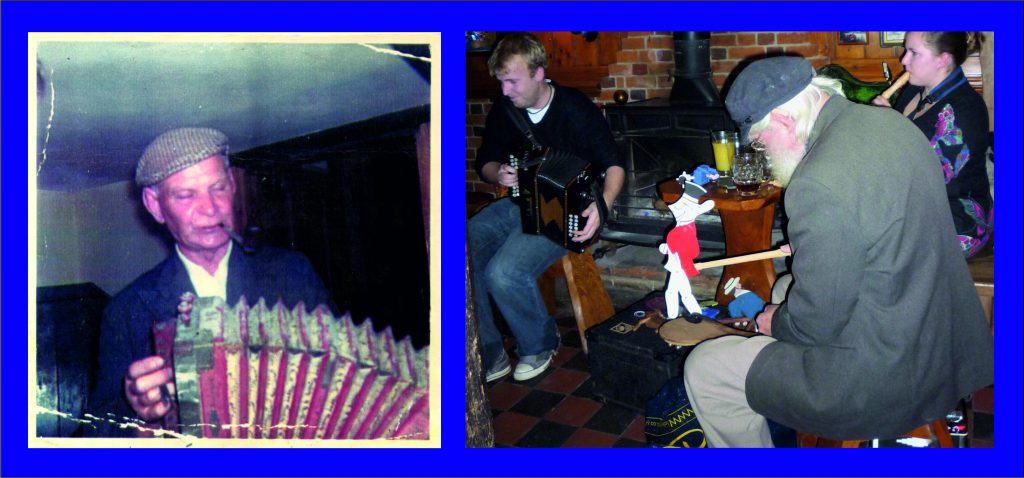
Another regular was Guy Barber (above left) who worked on the fishing fleet out of Lowestoft, who played the melodeon and sang popular songs such as The Volunteer Organist. His son John Barber (b.1927) (on the right in the right-hand photo, with his grandson Alex Goldsmith playing melodeon) carried on the family tradition and has sung and played in the Harbour and other local pubs for nearly seven decades. Until his retirement (aged 90) in 2017, John was the Town Bellman and a well-known figure in the town, dressed in his civic regalia, making announcements and proclamations. He learned one of his favourite songs The Northern Lights of Old Aberdeen from his father Guy. John plays the melodeon and mouth-organ, and spent many years performing in the company of George Jackson and John ‘Wiggy’ Goldsmith at pubs and parties in the area. John has been particularly keen to encourage youngsters to keep the music going locally and taught his grandson, Alex Goldsmith, to play the melodeon, as well as playing a crucial part in re-establishing the band tradition in the town with the foundation of the Southwold & Reydon Corps of Drums in 1981. John is also known for his unusual and distinctive ‘jig dolls’, which he made from a design he remembered from his youth, when an old man in Victoria Street in the 1940s used to sit in his doorway and dance similar ones on a board. Another old character in Church Street used to play the dulcimer in his doorway, whilst sporting an enamel plate on his head, to protect himself from shrapnel! John, ever inventive, has improved the design of the jig dolls by adding bells underneath the board, and his own trade-mark cigar in the mouth of one of them!
The Harbour Inn has remained a favourite pub for singing – several men who were the sons of fishermen continued to sing there throughout the twentieth century, and until the Coronavirus curtailed such things, it has had a thriving folk session there in recent years.
This has been a mixture of instrumental tunes played on folk instruments such as melodeons, concertinas and guitars and songs, both accompanied and unaccompanied, with many items having a local flavour.

The news in June 2021 from the organisers of the Harbour Inn sessions is that they hope to restart soon! From what we know about the longstanding tradition of singing and music-making in the Harbour Inn, these last couple of years must have been some of the quietest in the long history of the pub, apart from during World War II when it was closed for nearly six years.
Other pubs in Southwold which are known to have welcomed singing at various times in the twentieth century include the Nelson, the Victoria, the Southwold Arms and the Red Lion.
Information about the Southwold Arms is to be found on the post entitled MacKenzie’s Lambs and the Leg of Mutton and there are several other posts about Southwold too, including Up from the Sea, The Real Ben Hurr, A Life through Five Sovereigns and The Battle of Sole Bay: an Unsung Song.
Thanks to John Barber for the photo of his father Guy, and to Derek Simpson for the photos of John Barber and Alex Goldsmith and the session photo.
Thanks to Ian Goffin for the photo of the Harbour Inn, which came from the Southwold Life and Times group on Facebook.
The excellent website Southwold & Son has lots of interesting photographs and ephemera and a detailed history of the licensees at the Harbour Inn amongst its many gems.
Making Waves: Artists in Southwold, by Ian Collins was published by Black Dog Books in 2005.
Bob Jellicoe, curator of the Southwold Museum and archivist for the Sailors’ Reading Room, has been kind enough to share information about Billy Rogers with me in advance of his forthcoming book Shorelines: Voices of Southwold Fishermen, due to be published in October 2021 by Black Dog Books.
John Winter’s singing is featured on the CD “When the Wind Blows” on the Veteran label. John Winter died in January 2019 and there’s a great tribute to him in The East Anglian Daily Times, here.
Dinks Cooper may also be heard on the same CD, and there are interviews with him on the British Library Sound Archive website here, and here re Heave on the Trawl.
Dinks also featured in a couple of films. In 1962, Dick Joyce interviewed him as part of the now legendary Anglia TV series, “Bygones”. Although currently (5.6.21) the film itself is not online, there is a description of it here.
Dinks is also in this 1954 film, Fishing off the East Anglian Coast.
Please note: Anyone wishing to cite this original research should credit it to Katie Howson and cite this website as the source. © Katie Howson, 2021.

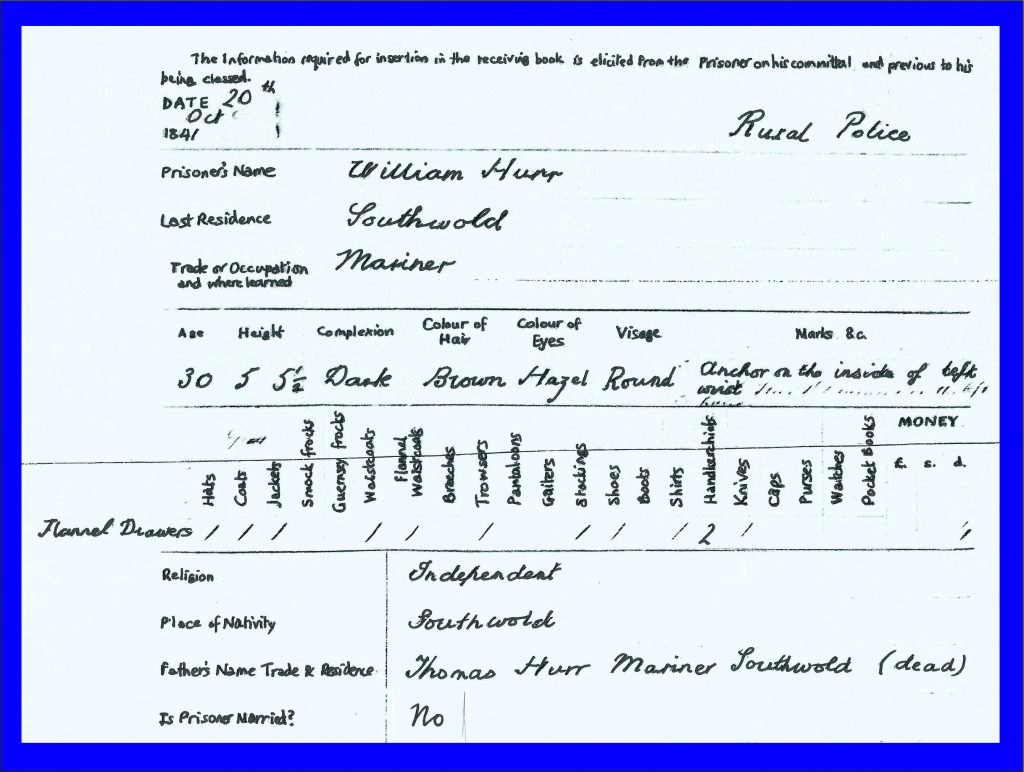
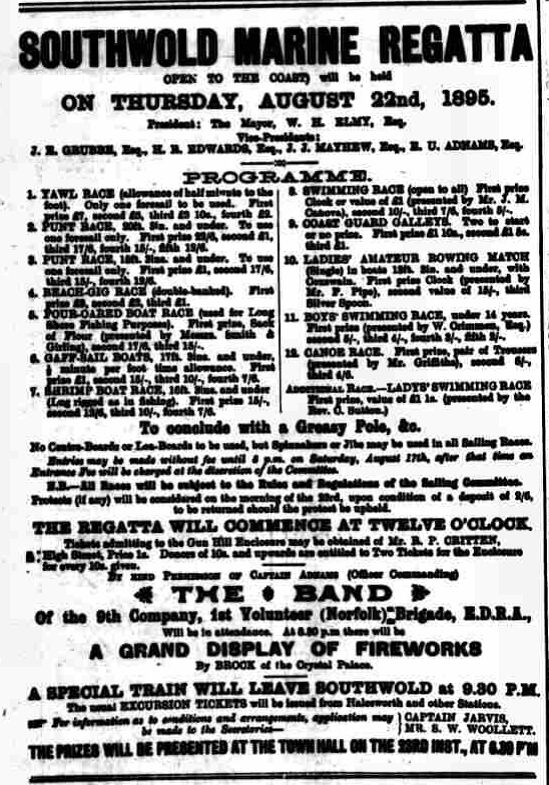 The boats were also used occasionally in competitions during regattas, and William’s family and boats had some successes: in those days, the fishing boats were at the heart of the event. In 1888 his son Sam was placed 5th in the 20ft punt class, in the Vigilant, and in 1889, the Ipswich Journal of 30th August reported the following result: “Punt race (20 feet and under): 1st prize of 25s. to Hurr’s Susannah; 3rd prize of 20s. to Hurr’s Vigilant – which nearly took second place.” That was to prove the zenith of the Hurrs competitive success – in 1893, the Vigilant came in 5th, still gaining a prize of 15 shillings and after that I cannot find any of William’s family listed: a likely reason is about to be revealed …
The boats were also used occasionally in competitions during regattas, and William’s family and boats had some successes: in those days, the fishing boats were at the heart of the event. In 1888 his son Sam was placed 5th in the 20ft punt class, in the Vigilant, and in 1889, the Ipswich Journal of 30th August reported the following result: “Punt race (20 feet and under): 1st prize of 25s. to Hurr’s Susannah; 3rd prize of 20s. to Hurr’s Vigilant – which nearly took second place.” That was to prove the zenith of the Hurrs competitive success – in 1893, the Vigilant came in 5th, still gaining a prize of 15 shillings and after that I cannot find any of William’s family listed: a likely reason is about to be revealed …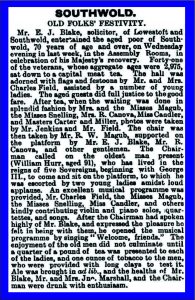
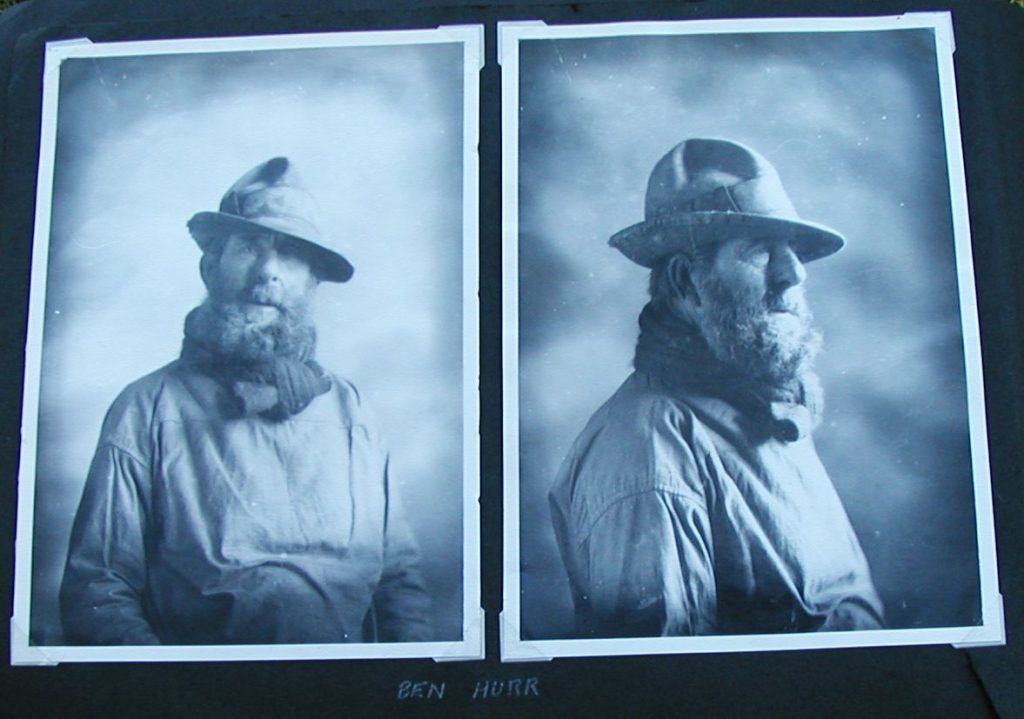
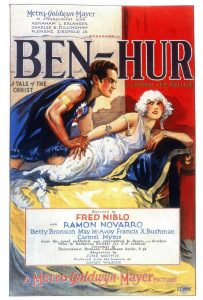 It’s just possible that this Ben Hurr (from Southwold on the Suffolk coast) knew of the famous film character Ben-Hur, as the 1880 novel was first released as a silent movie in 1925, and Southwold had its very own Electric Picture Palace from 1912. I hope the coincidence would have amused him as much as it did me when I first came across his name as a fisherman from whom folksong collectors Ralph Vaughan Williams and George Butterworth noted down songs in 1910.
It’s just possible that this Ben Hurr (from Southwold on the Suffolk coast) knew of the famous film character Ben-Hur, as the 1880 novel was first released as a silent movie in 1925, and Southwold had its very own Electric Picture Palace from 1912. I hope the coincidence would have amused him as much as it did me when I first came across his name as a fisherman from whom folksong collectors Ralph Vaughan Williams and George Butterworth noted down songs in 1910.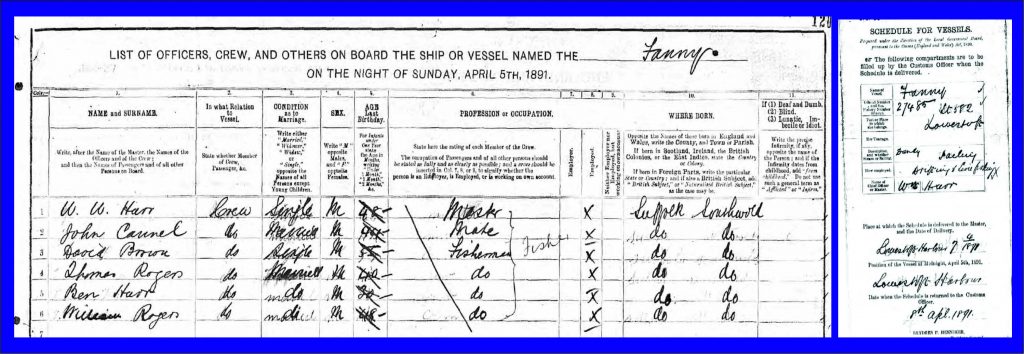 Benjamin Lowsey Hurr was the seventh child of William and Maria Hurr. Ben married Louisa Stannard in 1881 and they had one son. On the night of the 1891 census, 5th April, Ben was on board the Fanny, berthed in Lowestoft harbour. The master was his older brother William Watson Hurr and there were four other crew members.
Benjamin Lowsey Hurr was the seventh child of William and Maria Hurr. Ben married Louisa Stannard in 1881 and they had one son. On the night of the 1891 census, 5th April, Ben was on board the Fanny, berthed in Lowestoft harbour. The master was his older brother William Watson Hurr and there were four other crew members.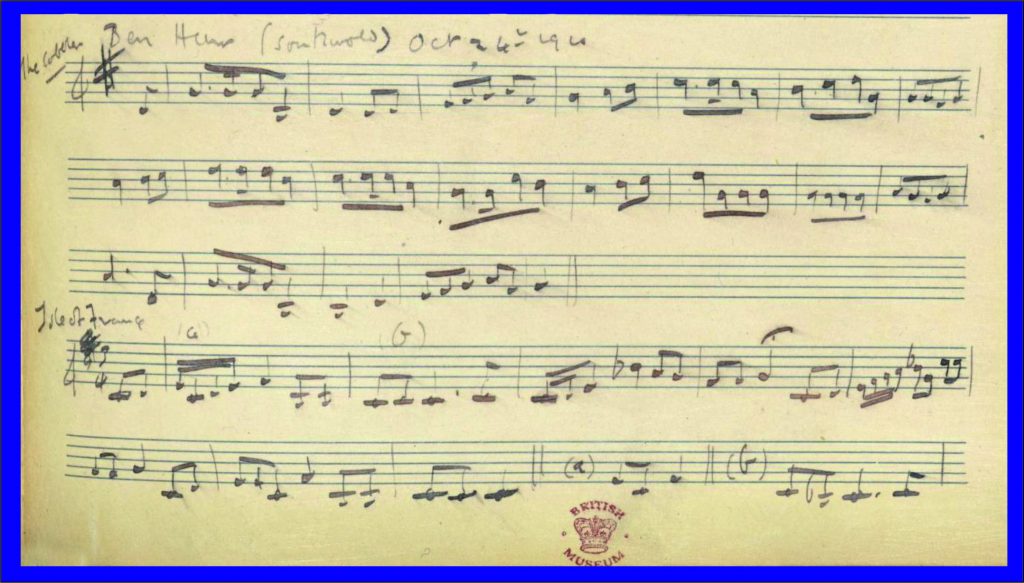
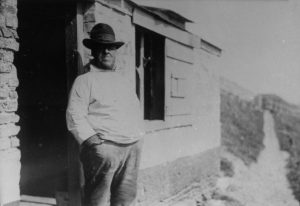
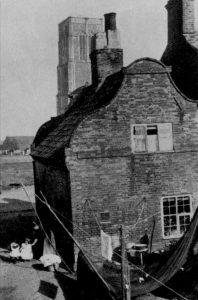 By 1901 Dubber and his family were living in what is now the Southwold Museum, which was then divided into two tiny cottages later condemned as unfit for housing. In the photograph here, you can just make out Matilda with two children, Susannah and Sam. They went on to have another daughter, Ellen in 1902, when Matilda was 47, whilst her two children from her first marriage were brought up by her brother and sister along the coast in Easton Bavents. Susannah is reputed to have been a professional singer, but I can find no evidence of this. Susannah’s husband Edgar Stockbridge worked in the brewery business and they moved away, eventually settling in Stevenage.
By 1901 Dubber and his family were living in what is now the Southwold Museum, which was then divided into two tiny cottages later condemned as unfit for housing. In the photograph here, you can just make out Matilda with two children, Susannah and Sam. They went on to have another daughter, Ellen in 1902, when Matilda was 47, whilst her two children from her first marriage were brought up by her brother and sister along the coast in Easton Bavents. Susannah is reputed to have been a professional singer, but I can find no evidence of this. Susannah’s husband Edgar Stockbridge worked in the brewery business and they moved away, eventually settling in Stevenage.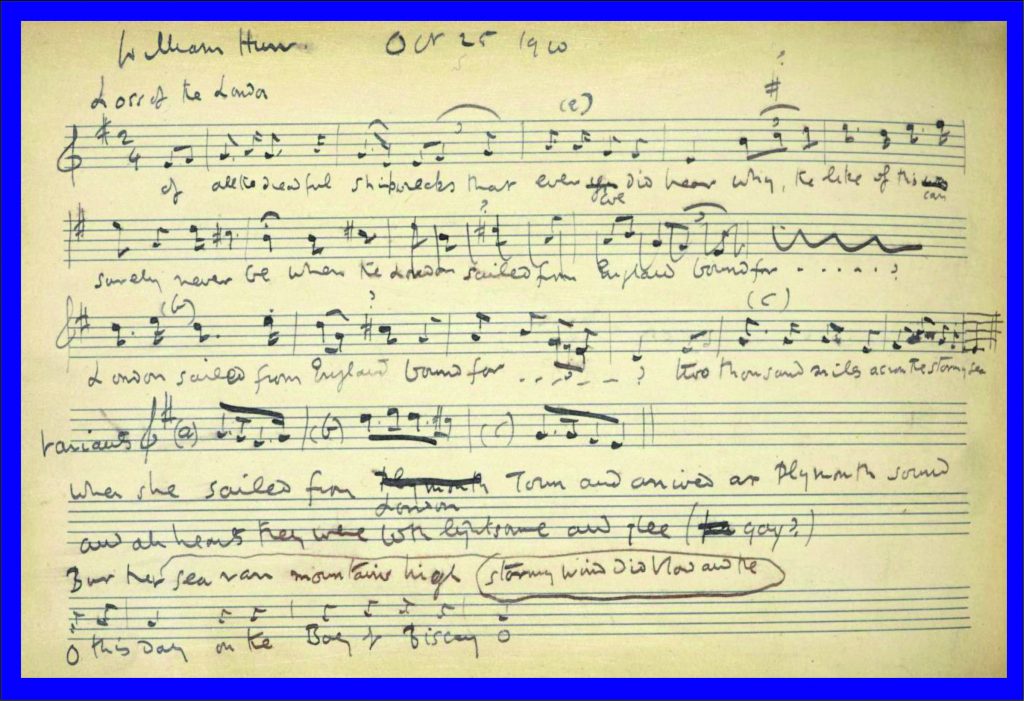
 In later years Robert worked in partnership with his son Walter (pictured on the left here, with Robert on the right). After the Second World War, Walter co-owned the boat Daisy with Ben’s son: these appear to be the last two of the family to be working fishermen.
In later years Robert worked in partnership with his son Walter (pictured on the left here, with Robert on the right). After the Second World War, Walter co-owned the boat Daisy with Ben’s son: these appear to be the last two of the family to be working fishermen.
 Martin Shaw grew up to be a very well-known and respected composer (Morning has Broken for example) and as a student he met Ralph Vaughan Williams. The two became lifelong friends and their correspondence includes some mention of folksong: Vaughan Williams encouraged Shaw to visit William Hurr but there’s no indication of whether he ever did – he certainly did not note down or describe any traditional singing apart from this one mention of George Hurr from his childhood years.
Martin Shaw grew up to be a very well-known and respected composer (Morning has Broken for example) and as a student he met Ralph Vaughan Williams. The two became lifelong friends and their correspondence includes some mention of folksong: Vaughan Williams encouraged Shaw to visit William Hurr but there’s no indication of whether he ever did – he certainly did not note down or describe any traditional singing apart from this one mention of George Hurr from his childhood years. 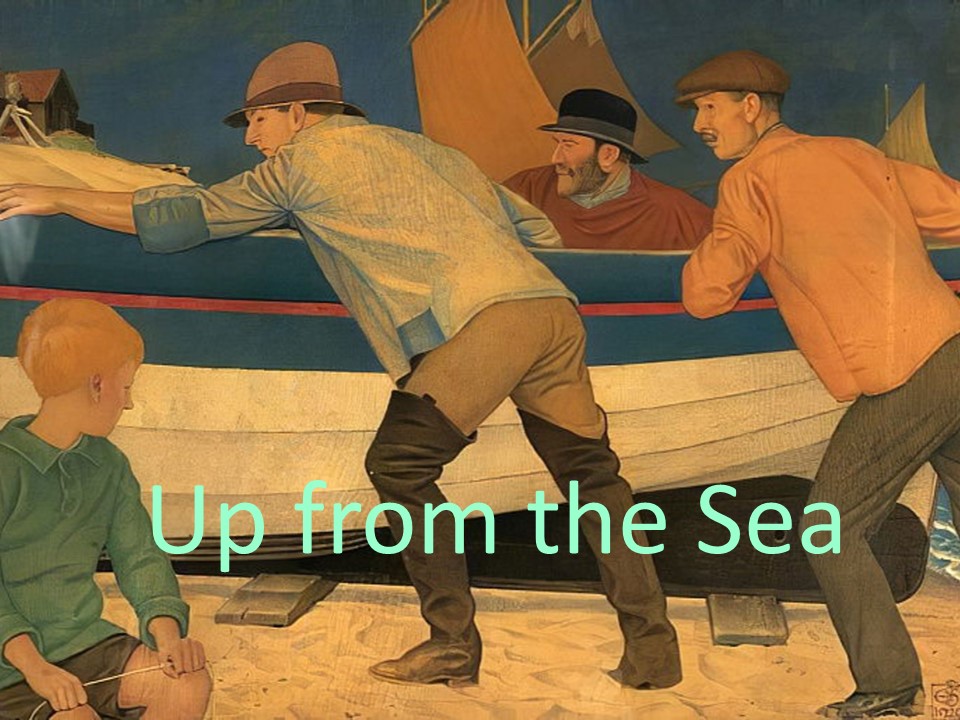 In April 2021 I presented one aspect of my work on the singing traditions from Southwold, in Suffolk for an online talk entitled Up from the Sea: Sea Songs from Southwold on the Suffolk Coast.
In April 2021 I presented one aspect of my work on the singing traditions from Southwold, in Suffolk for an online talk entitled Up from the Sea: Sea Songs from Southwold on the Suffolk Coast. He fell in love with a first cousin, Anna Elizabeth Baker (known as Bessie), and because of their close kinship they delayed their marriage until they were both in their early 40s. Joe and Bessie first came to Southwold on their honeymoon in 1903 and spent weeks in the town every summer for most of the ensuing 34 years. He evidently found much inspiration in both the fishing fraternity and the fashionable holiday-makers, but Bessie was also involved, sewing the fabric paintings on to frames and applying numerous coats of gesso and size to finish the work. The Southalls also made their own egg-based paint and carved and gilded picture frames. Colour was of the utmost importance and no varnishing was allowed, although Goodall aimed to suffuse his images with a “golden hue”.
He fell in love with a first cousin, Anna Elizabeth Baker (known as Bessie), and because of their close kinship they delayed their marriage until they were both in their early 40s. Joe and Bessie first came to Southwold on their honeymoon in 1903 and spent weeks in the town every summer for most of the ensuing 34 years. He evidently found much inspiration in both the fishing fraternity and the fashionable holiday-makers, but Bessie was also involved, sewing the fabric paintings on to frames and applying numerous coats of gesso and size to finish the work. The Southalls also made their own egg-based paint and carved and gilded picture frames. Colour was of the utmost importance and no varnishing was allowed, although Goodall aimed to suffuse his images with a “golden hue”.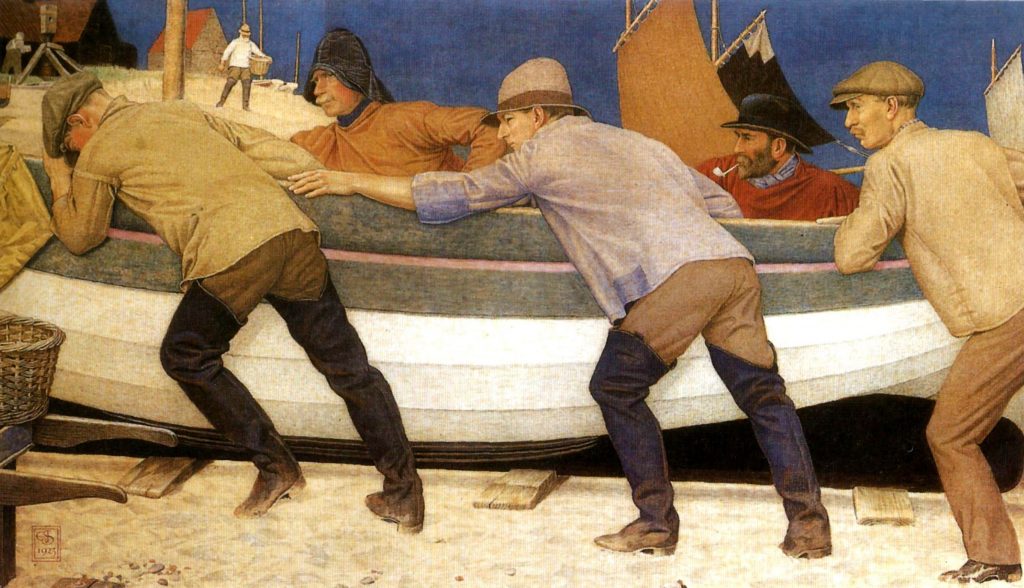
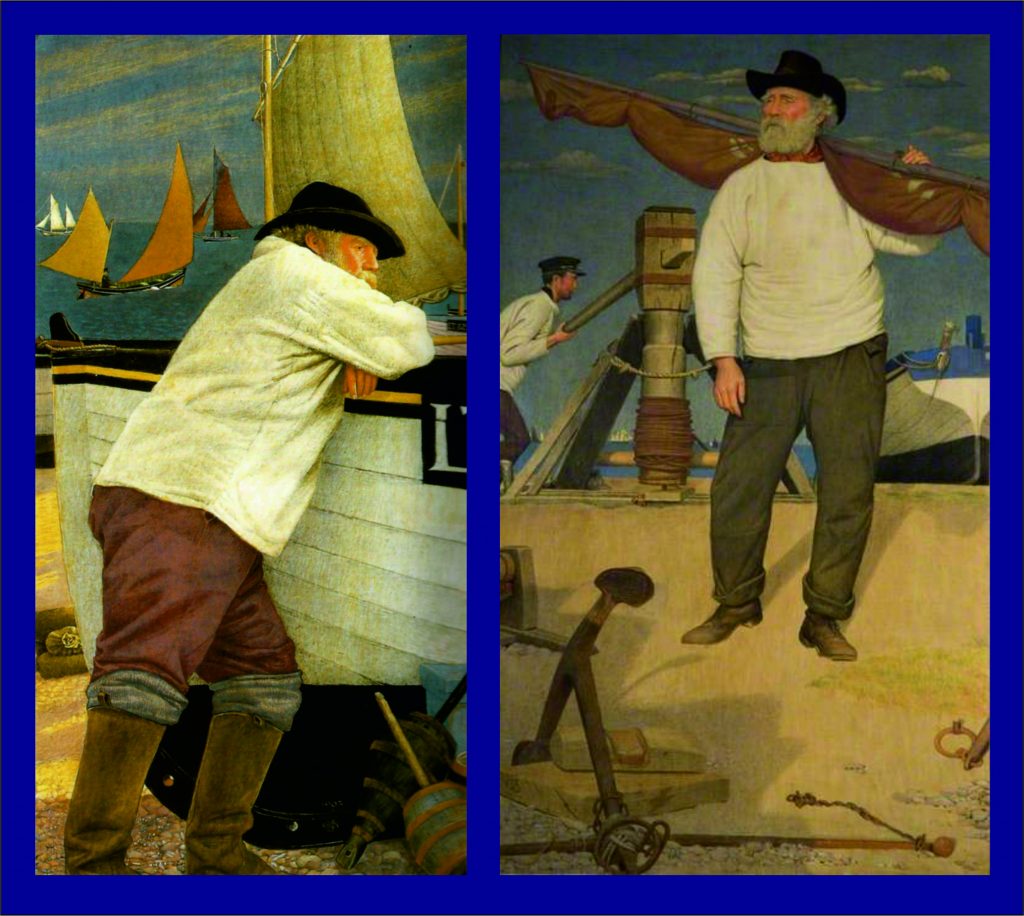 Southall’s images of holiday makers in Southwold show the changing fashions and habits in sea-bathing, and it is well worth browsing the internet where many more can be viewed.
Southall’s images of holiday makers in Southwold show the changing fashions and habits in sea-bathing, and it is well worth browsing the internet where many more can be viewed.
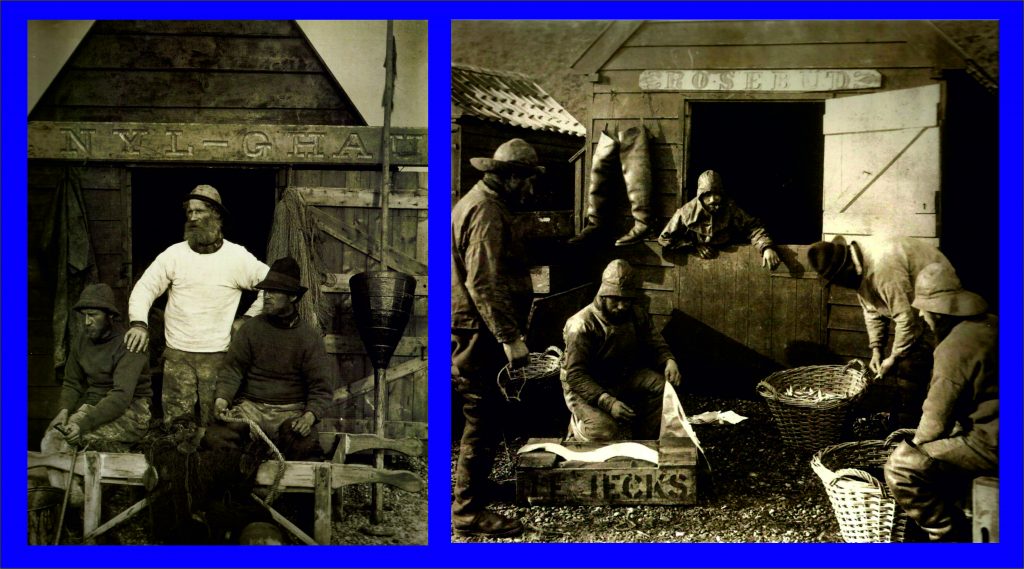

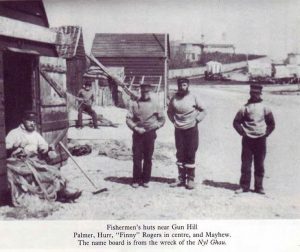 It is as well that Jenkins wrote the caption “The name board is from the wreck of the Nyl Ghau,” as it is not legible from the photo itself, but is clearly visible in Emerson’s photograph above.
It is as well that Jenkins wrote the caption “The name board is from the wreck of the Nyl Ghau,” as it is not legible from the photo itself, but is clearly visible in Emerson’s photograph above.
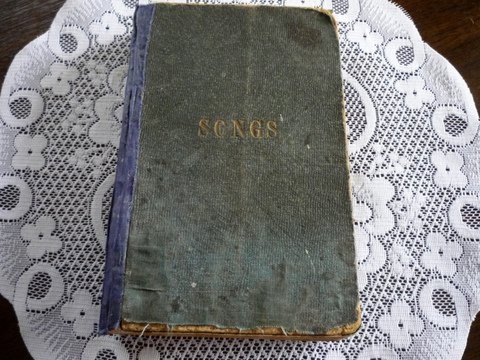

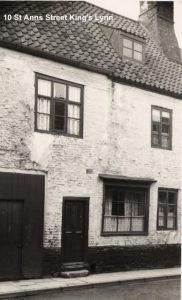 The newspapers of the time also detail some court cases about illegal fishing. Henry licensed mussel grounds (stone banks man-made for the purpose) in the Wash, and there are reports of other fishermen trying to fish these grounds, and of accusations of fishing in the closed season. The mussel beds were about seven miles from the fishing port in Lynn, and often necessitated a very early start in the morning and occasionally sleeping overnight on the boat. Henry owned various boats between 1873 and his death in 1890, including the Queen, Charles & William, Henry, Gainsboro Lass, Dove and Wave. These were, I think, fishing smacks, sailed by a crew of two or three men, catching mussels, whelks and shrimps according to the season. We can hear Henry’s own voice in an 1883 newspaper report:
The newspapers of the time also detail some court cases about illegal fishing. Henry licensed mussel grounds (stone banks man-made for the purpose) in the Wash, and there are reports of other fishermen trying to fish these grounds, and of accusations of fishing in the closed season. The mussel beds were about seven miles from the fishing port in Lynn, and often necessitated a very early start in the morning and occasionally sleeping overnight on the boat. Henry owned various boats between 1873 and his death in 1890, including the Queen, Charles & William, Henry, Gainsboro Lass, Dove and Wave. These were, I think, fishing smacks, sailed by a crew of two or three men, catching mussels, whelks and shrimps according to the season. We can hear Henry’s own voice in an 1883 newspaper report: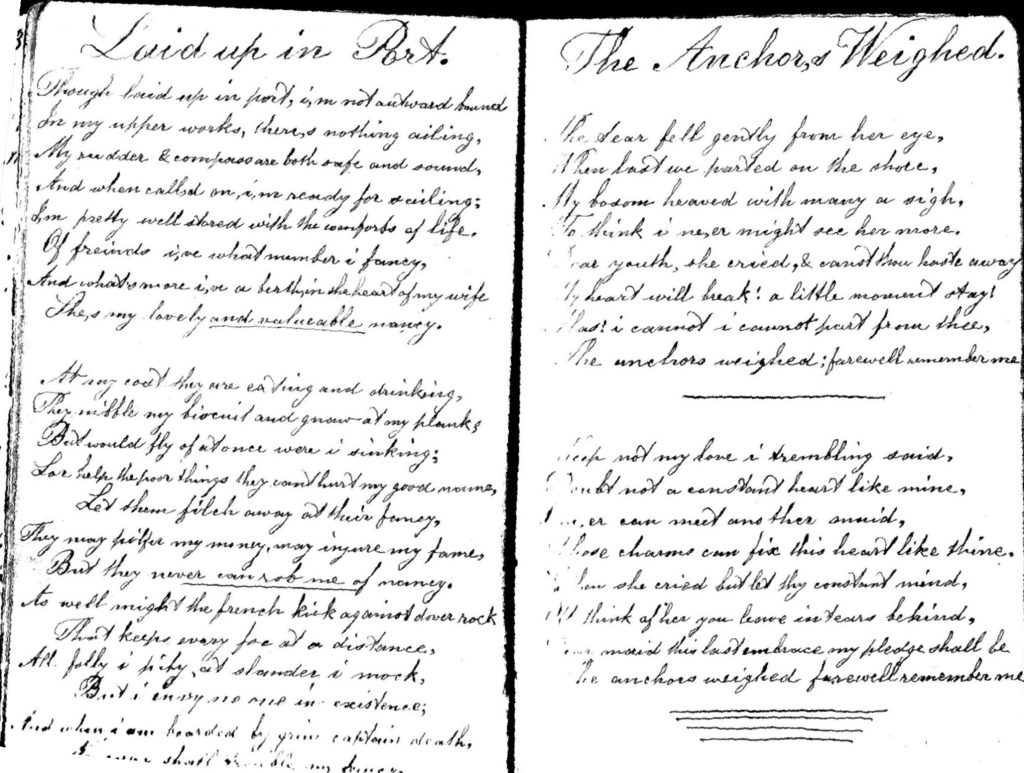


 There were certainly places in the North End itself where Flanders might have sung. The Dock Hotel stood on the corner of his street, and had its own “Music Hall” – the words still appear faintly on the wall in this modern photograph – and without walking more than a hundred yards, he would have had a choice of more than a dozen pubs.
There were certainly places in the North End itself where Flanders might have sung. The Dock Hotel stood on the corner of his street, and had its own “Music Hall” – the words still appear faintly on the wall in this modern photograph – and without walking more than a hundred yards, he would have had a choice of more than a dozen pubs. If Flanders actually knew how old his songs were, he might have suggested some of the oldest in his repertoire such as Black Ey’d Susan, Roast Beef of Old England or Tom Bowling but these would probably have been deemed too ‘commercial’ in style (as well as originating from known writers such as Charles Dibdin), and Vaughan Williams would probably have been more interested in others such as Lash’d to the Helm or Tars of the Blanch. These two sea songs seem to have been published only on broadsides – song sheets sold on the streets, with just the words, and no music attached.
If Flanders actually knew how old his songs were, he might have suggested some of the oldest in his repertoire such as Black Ey’d Susan, Roast Beef of Old England or Tom Bowling but these would probably have been deemed too ‘commercial’ in style (as well as originating from known writers such as Charles Dibdin), and Vaughan Williams would probably have been more interested in others such as Lash’d to the Helm or Tars of the Blanch. These two sea songs seem to have been published only on broadsides – song sheets sold on the streets, with just the words, and no music attached.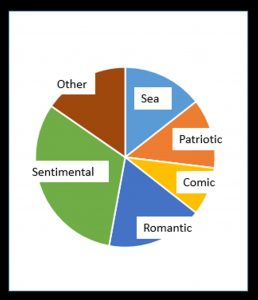
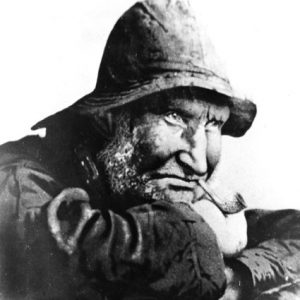 “Bussle” is George Edward Smith (1885-1970) who was the son of George William Smith. In the interview with Mike Herring, Bussle says that he learned some songs from his father who he remembered as only singing at home. His father, known as “Old Bussle” (pictured left) might well have been the “Mr Smith” who sang Bold Princess Royal for Vaughan Williams in the North End in 1905. Young Bussle followed his father into fishing, and married Harriet Benefer, daughter of another of Vaughan William’s singers, Lol Benefer. She died quite young and Bussle remarried in 1923, when he gave his occupation as fishing, but by 1939 he and his family had moved out to Smith Avenue and he was working in the sugar beet factory at the time the 1939 register was carried out. He may have carried on fishing part time, as work at the sugar beet factory was probably seasonal.
“Bussle” is George Edward Smith (1885-1970) who was the son of George William Smith. In the interview with Mike Herring, Bussle says that he learned some songs from his father who he remembered as only singing at home. His father, known as “Old Bussle” (pictured left) might well have been the “Mr Smith” who sang Bold Princess Royal for Vaughan Williams in the North End in 1905. Young Bussle followed his father into fishing, and married Harriet Benefer, daughter of another of Vaughan William’s singers, Lol Benefer. She died quite young and Bussle remarried in 1923, when he gave his occupation as fishing, but by 1939 he and his family had moved out to Smith Avenue and he was working in the sugar beet factory at the time the 1939 register was carried out. He may have carried on fishing part time, as work at the sugar beet factory was probably seasonal.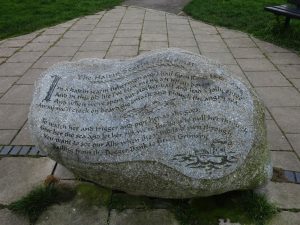
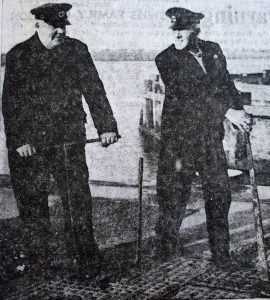 Mike Herring recorded four songs from him in total. In 1965 (date unspecified), Slinger Wood sang: Sailor Cut Down in his Prime. This is an old song, and was noted down in King’s Lynn in 1905 by Ralph Vaughan Williams from fisherman Joe Anderson.
Mike Herring recorded four songs from him in total. In 1965 (date unspecified), Slinger Wood sang: Sailor Cut Down in his Prime. This is an old song, and was noted down in King’s Lynn in 1905 by Ralph Vaughan Williams from fisherman Joe Anderson.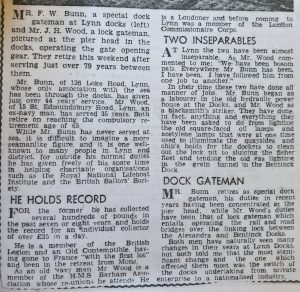
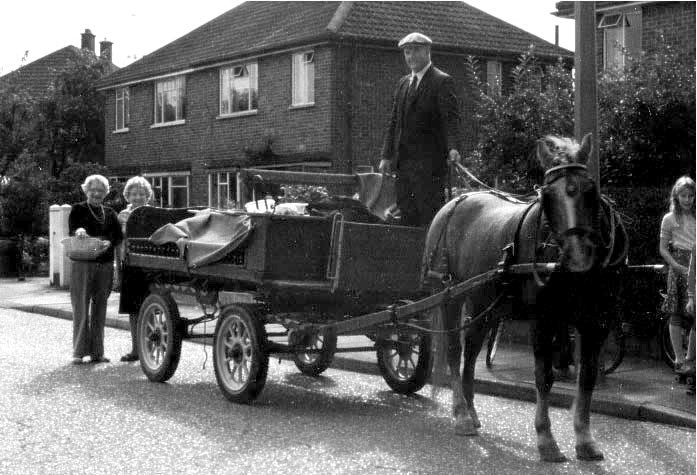
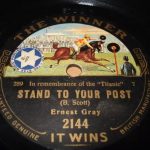 However, I have can at least tell you that it was recorded by Robert Carr (aka Ernest Gray), soon after the disaster happened in 1912, under the title Stand to Your Post, and you can listen to it here:
However, I have can at least tell you that it was recorded by Robert Carr (aka Ernest Gray), soon after the disaster happened in 1912, under the title Stand to Your Post, and you can listen to it here: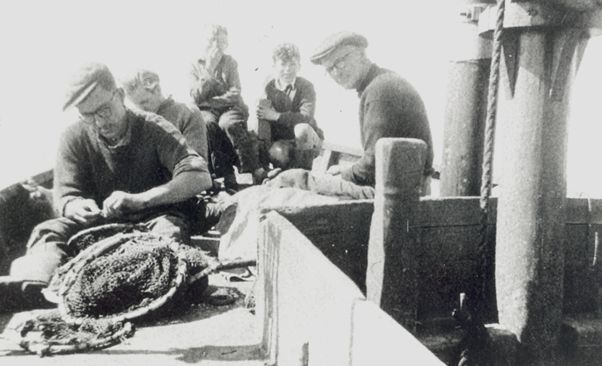
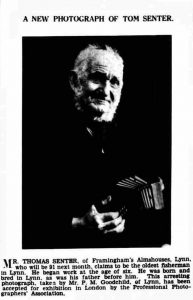 According to oral history, Tom Senter was a “natural” musician who played a number of instruments. Singer “Young Bussle” Smith remembered Senter as a singer.
According to oral history, Tom Senter was a “natural” musician who played a number of instruments. Singer “Young Bussle” Smith remembered Senter as a singer.
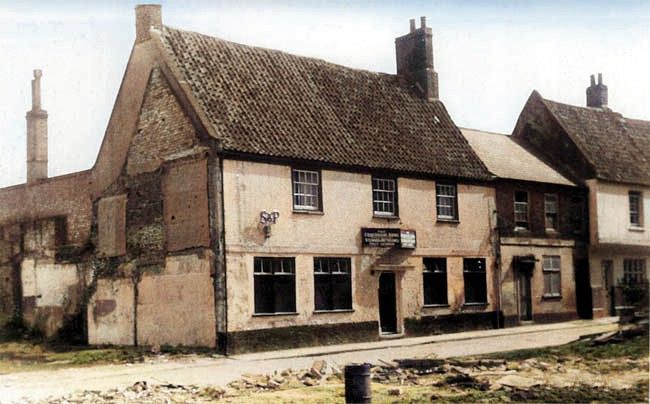
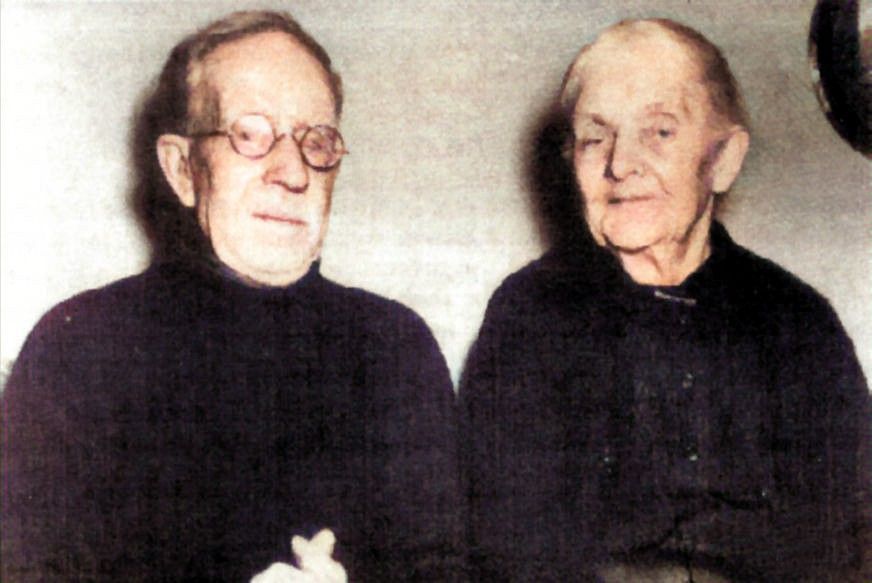 “The first song came from 89-year old Charlie Fysh, the oldest fisherman in Lynn. Now everyone knows Charlie and everyone knew this was going to be good. It was. It had been carefully explained to Charlie beforehand that he would have to leave out of the song certain words that might be considered offensive to the more aesthetically-minded listeners of the BBC.
“The first song came from 89-year old Charlie Fysh, the oldest fisherman in Lynn. Now everyone knows Charlie and everyone knew this was going to be good. It was. It had been carefully explained to Charlie beforehand that he would have to leave out of the song certain words that might be considered offensive to the more aesthetically-minded listeners of the BBC.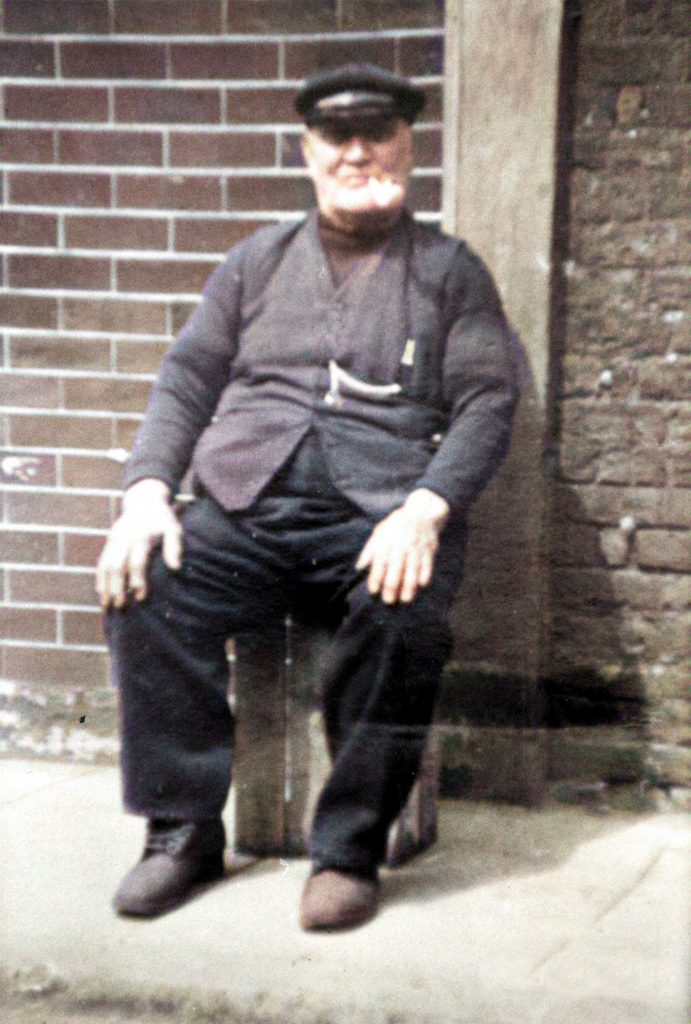
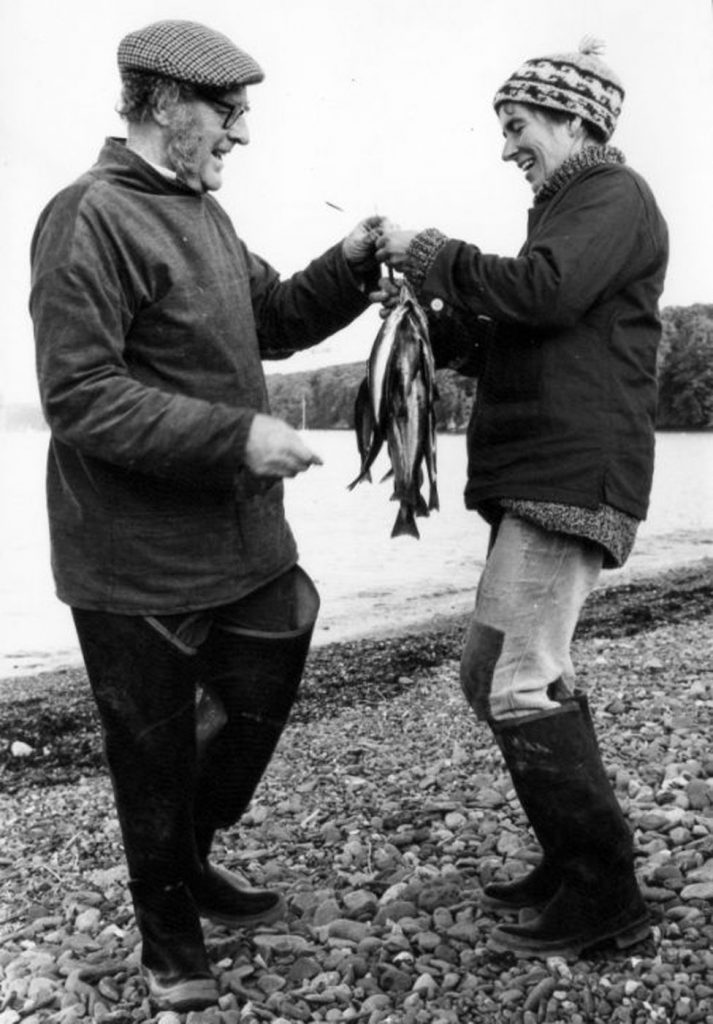 John Seymour is now best known as a guru of the self-sufficiency movement, writing books such as “The Fat of the Land” (1961) and “Self Sufficiency” (1973). He also wrote a number of other books and made many radio programmes, often based around his own travels.
John Seymour is now best known as a guru of the self-sufficiency movement, writing books such as “The Fat of the Land” (1961) and “Self Sufficiency” (1973). He also wrote a number of other books and made many radio programmes, often based around his own travels. 
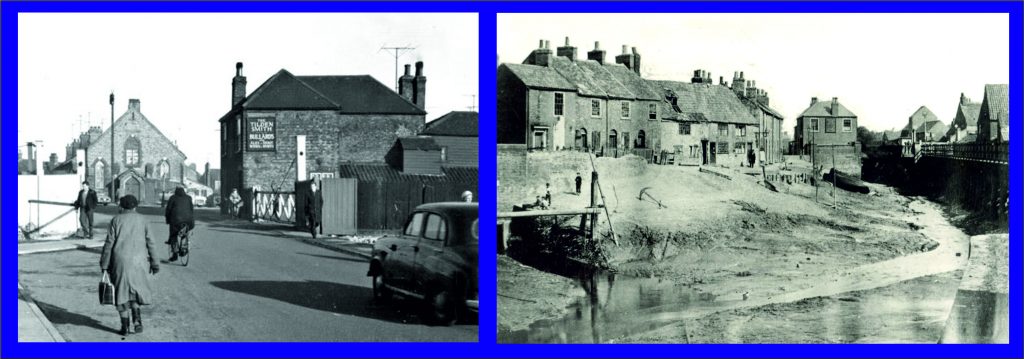
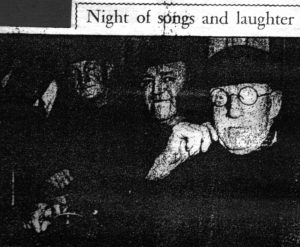 Charlie Fysh (1866-1961) was a fisherman all his life and was brought up in the old North End in a fishing family. Early married life saw him move a little further out, into Birchwood Street, in a Victorian development of terraced housing which was definitely more sanitary than the old North End yards. He sang Old Johnnie Bowker for the radio programme, and a musical gene evidently kept going through the generations, as one of his great grandsons is Roger Taylor, drummer with the rock band Queen! There is more about Charlie on
Charlie Fysh (1866-1961) was a fisherman all his life and was brought up in the old North End in a fishing family. Early married life saw him move a little further out, into Birchwood Street, in a Victorian development of terraced housing which was definitely more sanitary than the old North End yards. He sang Old Johnnie Bowker for the radio programme, and a musical gene evidently kept going through the generations, as one of his great grandsons is Roger Taylor, drummer with the rock band Queen! There is more about Charlie on
Recent Comments